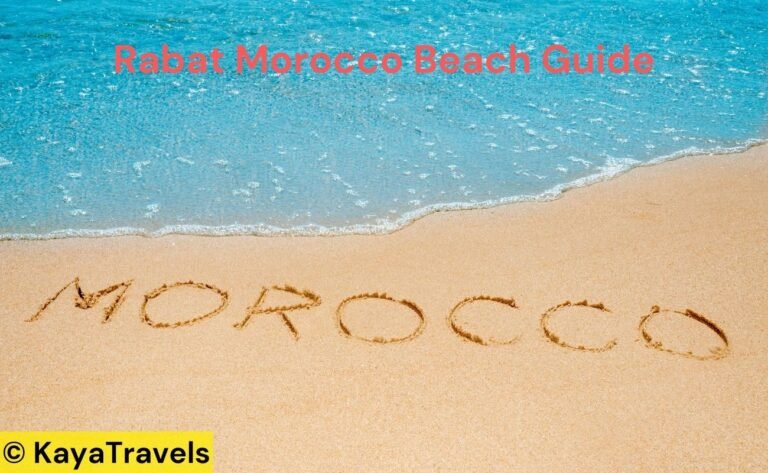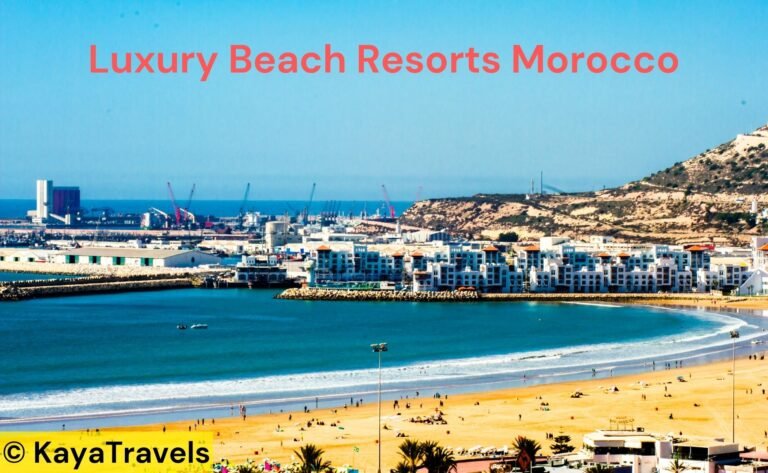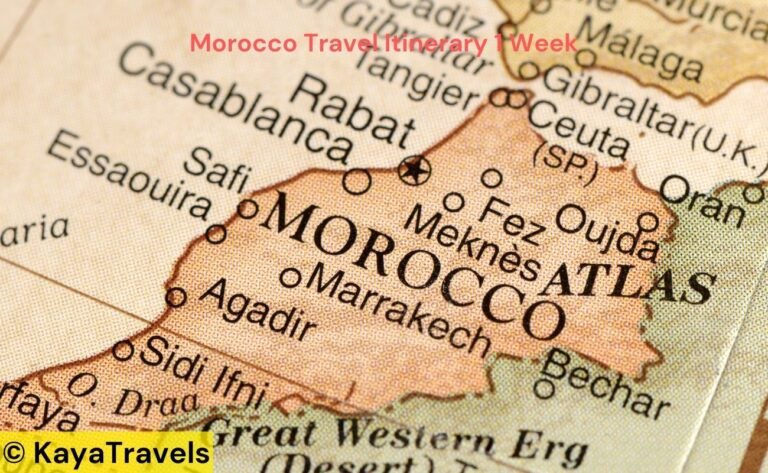Are you dreaming of exploring the vibrant culture, stunning architecture, and diverse landscapes of Morocco? One of the most crucial factors in planning your perfect Moroccan getaway is choosing the right time to visit.
In this comprehensive guide, we’ll delve into the best times to visit Morocco based on weather, activities, events, and more, ensuring that you have an unforgettable experience in this captivating country.
Understanding Morocco’s Climate
Morocco boasts a Mediterranean climate with diverse geographical influences, resulting in varying weather conditions throughout the country. To help you plan your trip, let’s break down the key factors affecting Morocco’s climate.
Temperature Variations
Morocco experiences a wide range of temperatures, depending on the region and time of year. Here’s what you can expect:
- Coastal Regions: Moderate temperatures, ranging from 15°C to 25°C, with cool winters and warm summers.
- Mountainous Areas: Cooler temperatures, dropping below freezing in winter and reaching comfortable levels in summer.
- Desert Regions: Extreme temperature fluctuations, with scorching hot days and cold nights.
Rainfall Patterns
The rainy season in Morocco typically runs from November to March, with the heaviest rainfall occurring in the coastal regions and the Rif Mountains. Keep these rainfall patterns in mind when planning your trip:
- Coastal Regions: Expect more rainfall during the winter months.
- Inland Areas: Receive less rainfall compared to coastal regions.
- Desert Regions: Experience little to no rainfall throughout the year.
Tip: Pack appropriate clothing based on your destination and the expected weather conditions.
Best Seasons to Visit Morocco
Each season in Morocco offers unique experiences and advantages. Let’s explore the best times to visit based on your preferences.
Spring (Mid-March to May)
Spring is an ideal time to visit Morocco, as it offers pleasant weather and fewer crowds. During this time, you can:
- Enjoy comfortable temperatures ranging from 15°C to 25°C.
- Witness the stunning beauty of blooming flowers and lush vegetation.
- Explore major cities and historical sites without the summer crowds.
Don’t Miss The Fes Festival of World Sacred Music, held annually in May, showcasing diverse spiritual music from around the globe.
Fall (September to October)
Fall is another excellent time to plan your Moroccan adventure, with warm temperatures and fewer tourists. Take advantage of this season to:
- Experience warm temperatures ranging from 20°C to 30°C.
- Explore the vibrant cities of Marrakech, Fes, and Casablanca.
- Embark on a desert safari or hike in the Atlas Mountains.
Insider Tip: Visit during the olive harvest season to witness the fascinating process and taste the freshest Moroccan olive oils.
Summer (June to August)
Summer in Morocco can be hot, but it’s perfect for beach lovers and those seeking to escape the crowds in the cities. During summer, you can:
- Enjoy the warm Mediterranean waters and stunning beaches along the coast.
- Explore the cooler mountain regions, such as the Rif or Atlas Mountains.
- Attend popular music festivals, like the Gnaoua World Music Festival in Essaouira.
Remember: Temperatures can soar above 40°C in some areas, so be prepared for the heat and stay hydrated.
Winter (November to February)
Winter in Morocco offers unique experiences, especially for those interested in desert adventures or winter sports. In winter, you can:
- Enjoy cooler temperatures in the desert, making it more comfortable to explore.
- Witness the stunning snow-capped peaks of the Atlas Mountains.
- Participate in winter sports, such as skiing or snowboarding, in the Oukaïmeden ski resort.
Tip: Be prepared for colder temperatures in the northern regions and pack warm clothing accordingly.
Best Time for Different Activities
Morocco offers a plethora of activities for every type of traveller. Here’s a breakdown of the best times for popular activities:
Beach Holidays
If you’re looking to soak up the sun and enjoy the stunning Moroccan coastline, the best time to visit is from June to August. During this time, you can:
- Relax on the beautiful beaches of Essaouira, Agadir, or Tangier.
- Enjoy water sports like surfing, kiteboarding, and windsurfing.
- Indulge in delicious seafood at coastal restaurants.
Hiking and Trekking
For those seeking outdoor adventures, the best time for hiking and trekking in Morocco is from March to May or September to November. During these months, you can:
- Explore the stunning trails of the Atlas Mountains or the Rif Mountains.
- Enjoy comfortable temperatures and clear skies.
- Witness stunning views of the surrounding landscapes.
Cultural Festivals
Morocco is known for its vibrant cultural festivals, showcasing music, art, and tradition. Some of the best times to attend festivals are:
- June: Attend the Gnaoua World Music Festival in Essaouira.
- July: Experience the Timitar Festival in Agadir, celebrating Amazigh culture.
- December: Witness the International Film Festival of Marrakech.
Desert Experiences
To fully immerse yourself in the magic of the Moroccan desert, the best time to visit is from October to April. During these months, you can:
- Enjoy cooler temperatures, making it more comfortable to explore the desert.
- Embark on a camel trek or 4×4 safari in the Sahara Desert.
- Stay in a traditional Berber camp and stargaze under the clear night sky.
Remember: Nighttime temperatures in the desert can drop significantly, so pack warm clothing.
Tourist Crowds and Accommodation
When planning your trip to Morocco, it’s essential to consider tourist crowds and accommodation availability. Here’s what you need to know:
Peak Tourist Seasons
The peak tourist seasons in Morocco are:
- Summer (June to August): Expect larger crowds in coastal areas and famous cities.
- Winter (December to February): Expect higher prices and more tourists in the southern regions.
Tip: Book your accommodation and tours well in advance during peak seasons to avoid disappointment.
Low and Shoulder Seasons
To enjoy lower prices and fewer crowds, consider visiting during the low or shoulder seasons:
- Low Season (May to September, excluding June to August): Enjoy lower prices and fewer tourists.
- Shoulder Season (March to May, September to November): Experience pleasant weather and moderate crowds.
Insider Tip: Visiting during the low or shoulder seasons can result in better deals on accommodation and tours.
Regional Weather Insights
To help you plan your trip more effectively, let’s take a closer look at the weather conditions in popular Moroccan cities.
Marrakech
Marrakech, known for its vibrant markets and stunning architecture, experiences hot summers and mild winters.
- Summer: Temperatures can reach 40°C or higher.
- Winter: Temperatures range from 10°C to 20°C.
Best Time to Visit: March to May or September to November.
Fes
Fes, the cultural capital of Morocco, has a climate similar to Marrakech, with hot summers and mild winters.
- Summer: Temperatures can exceed 40°C.
- Winter: Temperatures range from 10°C to 15°C.
Best Time to Visit: March to May or September to November.
Casablanca
Casablanca, Morocco’s largest city, has a more moderate climate compared to inland cities.
- Summer: Temperatures range from 25°C to 28°C.
- Winter: Temperatures range from 12°C to 15°C.
Best Time to Visit: April to October.
Tangier
Tangier, located in northern Morocco, has a Mediterranean climate with mild temperatures throughout the year.
- Summer: Temperatures range from 25°C to 30°C.
- Winter: Temperatures range from 10°C to 15°C.
Best Time to Visit: April to October.
Frequently Asked Questions
- What is the best time to visit Morocco for a desert experience? The best time to visit the Moroccan desert is from October to April, when temperatures are cooler and more comfortable for outdoor activities.
- Can I visit Morocco during Ramadan? Yes, you can visit Morocco during Ramadan. However, be aware that some businesses may have limited hours, and restaurants may be closed during the day.
- What should I pack for a trip to Morocco? Pack lightweight, breathable clothing for the day and warm layers for the evenings. Don’t forget to bring comfortable walking shoes, sunscreen, and a hat.
- Is it safe to travel to Morocco? Morocco is generally a safe country for tourists. However, as with any destination, it’s essential to exercise caution and be aware of your surroundings.
- Do I need a visa to visit Morocco? Many nationalities, including US and EU citizens, do not require a visa to stay for up to 90 days. However, please check with the Moroccan embassy in your country for the most up-to-date information.
For more detailed information and personalized recommendations, check out our articles:
- Morocco Packing List: Essential Items for Your Trip
- Top 10 Must-Visit Cities in Morocco
- Moroccan Food: A Culinary Journey for Your Taste Buds
Conclusion
Choosing the best time to visit Morocco depends on your preferences, desired activities, and the regions you plan to explore. By considering factors such as weather, events, and tourist crowds, you can create the perfect itinerary for your Moroccan adventure.
Remember to pack appropriately, book accommodations in advance, and be open to the unique experiences each season offers. Whether you’re seeking a beach getaway, a cultural immersion, or an outdoor adventure, Morocco has something to offer every type of traveller.
Start planning your dream trip to Morocco today, and get ready to fall in love with this enchanting country!
Ready to book your Moroccan getaway? Check out our exclusive travel deals and packages!



